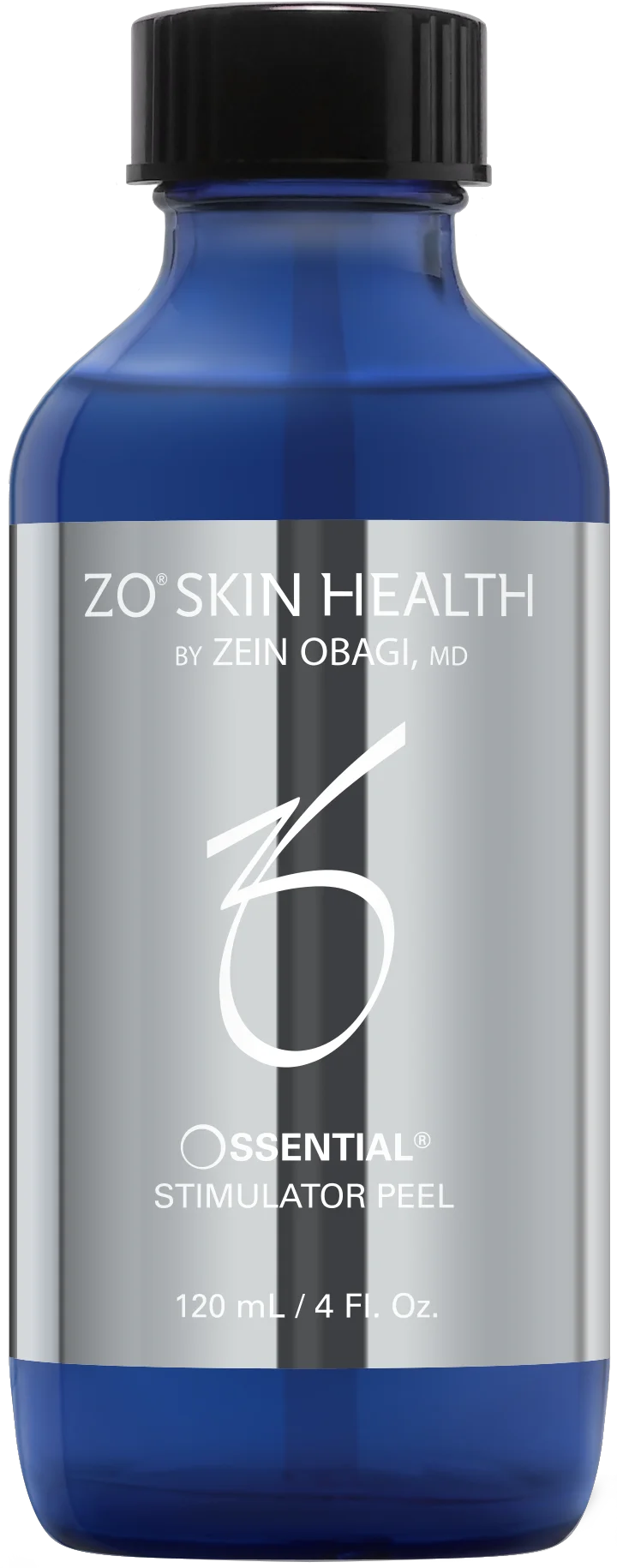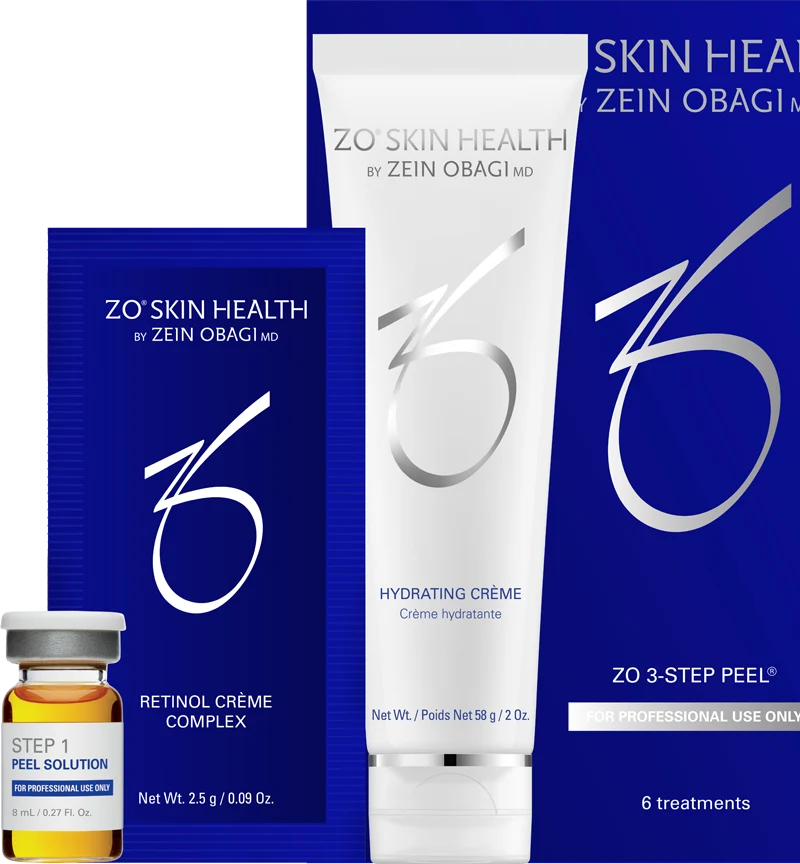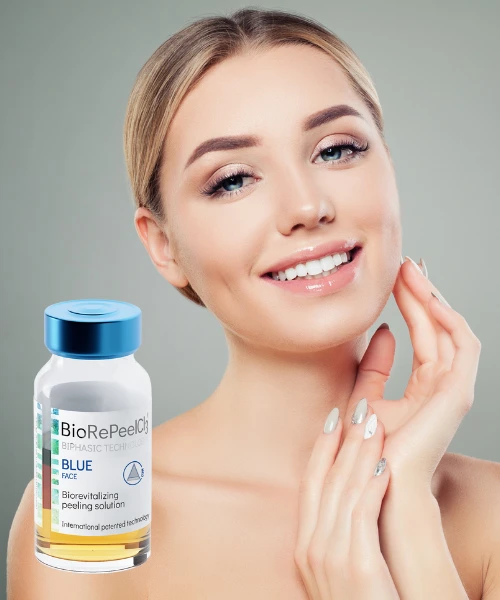Chemical Peels

ZO Skin Health Stimulator Peel aka "Enzymatic Facial"
Got some concerns to correct or prepping for a big event? a Stimulator Peel peel weekly will reduce concerns and glam the skin.
- Reducing the appearance of fine lines and wrinkles
- Acne and pore size reduction
- Age spots otherwise known as sun spots
- Improving skin texture and tone
- Gentle brightening
- Dull skin appearance
- Brighten skin tone
- Improve rough, dry texture

ZO Skin Health 3 Step Peel
Looking to maximize your results with a powerful, yet moderate-depth peel? This one’s for clients looking for RESULTS! The ZO 3 Step Peel is an innovative peel that actively combat the signs of aging and skin discoloration.
It works by completely exfoliating and renewing the epidermis while stimulating the dermis to produce collagen. This combined action provides a firming and smoothing effect on the skin that results in a more youthful complexion with glowing results.
You can expect a blend of exfoliants, retinol and multi-action agents to help improve skin health and treat many signs of aging. It is a powerfully effective peel and requires a minimum of 4-6 weeks skin prep prior to the peel with a retinol (0.5% or higher) to ensure your skin recovers quickly and healthy while minimizing risks. Consultation by our licensed esthetician is required prior to your ZO 3 Step Peel to begin your prep product regimen personalized to your specific skin concerns and treatment goals.
How often should I do the procedure?
- Acne
- Melasma
- Skin laxity or "loose, saggy" or "crepey" skin
- Sun damage and hyperpigmentation
- Uneven tone and texture
- Uneven tone and texture
- Fine lines and wrinkles
What Is A Chemical Peel?
Chemical peels remove damaged outer layers of skin to make skin smoother, reduce scarring and remove blemishes. Ranging from mild to strong, there are three types of chemical peels: alphahydroxy acid (AHA), trichloroacetic acid (TCA) and phenol. The strength of each peel is tailored to the patient. Peels can be combined with other procedures, such as facelifts, for additional improvement to skin. Chemical peels may be covered by insurance if they are performed for medical rather than cosmetic reasons.
Chemical peels are performed in a plastic surgeon’s or dermatologist’s office, or an outpatient surgical center. Anesthesia is not required because TCA and phenol have anesthetic properties, and AHA produces only a slight stinging.
Chemical Peel Procedure
Side Effects of Chemical Peels
Chemical Peels FAQs
What do chemical peels treat?
What types of chemical peels are there?
What is an alphahydroxy acid (AHA) peel?
What is a trichloroacetic acid (TCA) peel?
What is a phenol peel?
A phenol peel, which is the strongest chemical peel, treats deeper skin problems such as coarse facial wrinkles and precancerous growths, as well as areas of blotchy or damaged skin caused by sun exposure, aging or birth-control pills.
Because phenol can lighten skin where it is applied, the patient’s natural pigmentation is a factor in determining a phenol peel’s suitability. Phenol is used only on the face because it may cause scarring elsewhere. Full-facial treatment can last an hour or two, and recovery can take a few months, with possible permanent lightening of the skin and removal of freckles.
Where are chemical peels performed?
Should chemically peeled skin be kept out of sunlight?
Are there risks associated with a chemical peel?
Is a chemical peel covered by insurance?

BioRePeel Blue
Upgrade your skincare routine with the revolutionary BioRePeel Blue at Square One Aesthetics, an innovative treatment designed to give your skin a new lease on life. This advanced peel tackles a number of skin concerns with no downtime, making it the perfect choice for those seeking immediate, visible results. Experience the transformative benefits of BioRePeel Blue, including:
- Reduces fine lines and wrinkles
- Improves skin texture and tone
- Decreases the appearance of acne and blackheads
- Enhances hydration for a supple, youthful glow
- Diminishes signs of sun damage and hyperpigmentation
Step into Square One Aesthetics and let BioRePeel Blue reveal your skin’s true potential, leaving you with a flawless, rejuvenated complexion.
BioRePeelCl3® GOLD
BioRePeelCl3® GOLD is an innovative two-phase TCA peel targeting various skin concerns across the back, shoulders, buttocks, legs, knees, elbows, hands, and feet. This advanced treatment offers impressive results without the downtime associated with traditional peels, combining exfoliating, beautifying, and moisturizing actions for a comprehensive aesthetic solution.
Using 50% Trichloroacetic Acid and a unique blend of α-hydroxyacids, β-hydroxyacids, poly-hydroxyacids, amino acids, and vitamins, this gold-infused peel exfoliates and removes dead skin cells to reveal a smoother, more radiant complexion.
- Diminishes fine lines, wrinkles, age spots, and skin laxity.
- Lightens dark spots, sun spots, and melasma.
- Reduces breakouts, controls oil production, and treats acne scars.
- Smooths rough or uneven skin texture.
See immediate results like tighter pores and plumper skin, with further improvements after a series of treatments.
Book your BioRePeelCl3® GOLD treatment today and experience the ultimate in skin rejuvenation.

